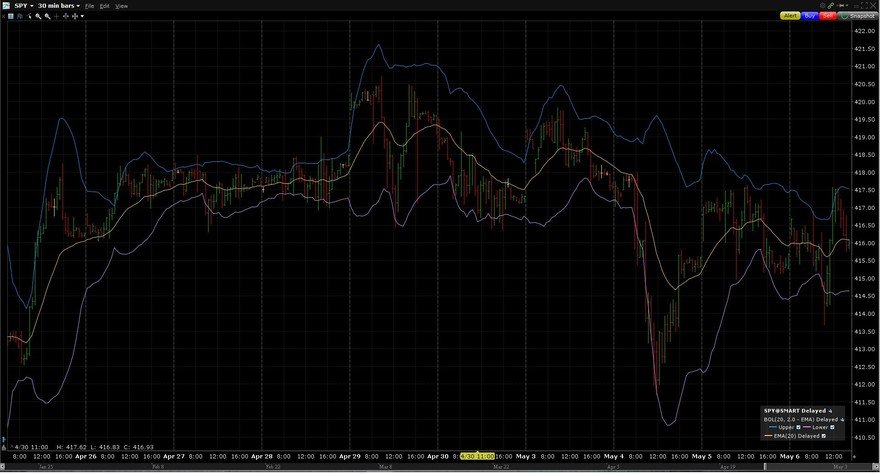Investors optimize their decisions using a variety of approaches. One such approach is technical analysis. Technical analysis for stocks uses data on past movements in stock price and overall market sentiment in an attempt to predict the future change in a stock's price. Making correct assumptions about the future is part of successful investing, so it's no surprise that some investors are drawn to technical analysis to make investment decisions.

What is technical analysis?
What is technical analysis?
Technical analysts buy and sell based on a company's past stock price movements, trading volumes, and investor sentiments. Technical analysis proponents take the position that factors such as sales growth, profitability, debt and cash on the balance sheet, and the industry in which a company operates are already priced into the company's shares. If two very different companies happen to have similar historical charts, then a technical analyst might predict a similar future price outcome for each.
Technical analysts believe price patterns repeat themselves and that recognizing these patterns is the best way to beat the stock market's average returns. Traders often use technical analysis to attempt to profit from short-term -- daily, weekly, or monthly -- volatility in a stock's price. These traders are focused on gauging market sentiment and identifying in charts the patterns that have occurred in the past and could repeat in the near future.
Returns
Technical analysis limitations
Technical analysis limitations
Although there are some technical analysts who beat the market over time, various studies indicate the vast majority of technical analysis produces results little better than a coin flip. Over the short term -- minutes, days, weeks, or even months -- stock price movements are binary, meaning the likelihood of the price moving either up or down is about 50/50.
Charts can also give wrong signals about future price movements and don't automatically take into consideration events such as quarterly earnings reports, which can cause unpredictable price movements. Political changes and other business announcements that can affect an industry and a company are also not factored into technical analysis.
For long-term investors seeking companies to own for years or even decades, short-term charts don't hold a lot of value. Had you invested in Amazon (AMZN -1.11%) shortly after its IPO in 1997, whether you invested when the stock's price was $2 or $2.50, today you'd be happy either way. Also, past performance is not indicative of future results. Despite many years of rapid profitability gains, Amazon may start to plateau in the next 10-year stretch.
Technical analysis vs. fundamental analysis
Technical analysis vs. fundamental analysis
Investors generally divide into two main camps: technical analysts and fundamental analysts.
Fundamental analysts evaluate stocks based on industry and business fundamentals. Secular growth trends such as those occurring in digital advertising, cloud computing, and streaming TV are relevant to fundamental analysis, as are a company's prospects within its industry, its revenue growth, and its net income or free cash flow growth. Fundamental analysts compute financial metrics like the price-to-sales (P/S) ratio and price-to-earnings (P/E) ratio.
Cloud Computing
Fundamental analysis evaluates whether a company becomes more efficient as it gets larger, the success of its new projects or acquired businesses, and many other factors, while technical analysis can indicate how good a company is at increasing its profit margins. Investors who favor fundamental analysis believe a business with a long track record of increasing profitability is likely to continue to do so, and that the company's share price will rise in tandem with that increasing profitability.
Owning shares of a company represents an ownership stake in the business, which includes a claim to part of that company's future cash flows. Fundamental analysis projects and assesses these future cash flows for the purpose of identifying a mismatch between a company's likely future value and its current stock price. That mismatch, for fundamentalists, represents a buying opportunity.
Some investors use a blend of both fundamental and technical analysis. After identifying a company they like, they might try to time their purchase using charts and past data to buy at the best price possible.

How is technical analysis used?
How is technical analysis used?
As a simple example, a technical analyst might use a chart like the one below to assess when to buy and sell the SPDR S&P 500 ETF (SPY -0.59%). A chartist might reason that the exchange-traded fund (ETF) is "overbought" when the price reaches the upper end of the band and decide to sell. He or she might also consider the ETF is "oversold" when the price reaches the lower end of the band, indicating that it's time to buy.
Exchange-Traded Fund (ETF)
The best path to long-term growth
The Motley Fool does not use technical analysis to predict stock price movements. Technical analysis might have merit for some traders, but the most sustainable path to achieving long-term investing success does not include short-term chart reading. Investors who own the stocks of companies for long periods of time view short-term technical analysis as a distraction. Focusing on fundamentals such as revenue and profit growth -- indicators that a company operates in an industry with above-average growth -- or on signs that a company has a competitive advantage are all consistent with long-term wealth building. Focusing on long-term trends is the best and most sustainable path to achieving your financial goals.






















































































































































































































